Heavy Metals On Earth Originate From Supernova Explosion
Eddie Gonzales Jr. – MessageToEagle.com – A new research by a University of Guelph physicist suggests that most of them were spewed from a largely overlooked kind of star explosion far away in space and time from our planet.
“Some 80 per cent of the heavy elements in the universe likely formed in collapsars, a rare but heavy element-rich form of supernova explosion from the gravitational collapse of old, massive stars typically 30 times as weighty as our sun,” U of G physics professor Daniel Siegel, said in a press release.
That finding overturns the widely held belief that these elements mostly come from collisions between neutron stars or between a neutron star and a black hole, said Siegel.
Using supercomputers, researchers simulated the dynamics of collapsars, or old stars whose gravity causes them to implode and form black holes.
“Under their model, massive, rapidly spinning collapsars eject heavy elements whose amounts and distribution are “astonishingly similar to what we observe in our solar system,” said Siegel.
Until now, scientists thought that these elements were cooked up mostly in stellar smashups involving neutron stars or black holes, as in a collision of two neutron stars observed by Earth-bound detectors that made headlines in 2017.
Ironically, said Siegel, his team began working to understand the physics of that merger before their simulations pointed toward collapsars as a heavy element birth chamber.
“Our research on neutron star mergers has led us to believe that the birth of black holes in a very different type of stellar explosion might produce even more gold than neutron star mergers.”
What collapsars lack in frequency, they make up for in generation of heavy elements, said Siegel. Collapsars also produce intense flashes of gamma rays.
“Eighty per cent of these heavy elements we see should come from collapsars. Collapsars are fairly rare in occurrences of supernovae, even more rare than neutron star mergers – but the amount of material that they eject into space is much higher than that from neutron star mergers.”
The team’s model can be soon validated by observations when infrared instruments such as those on the James Webb Space Telescope, set for launch in 2021, should be able to contribute with further data.
Written by Eddie Gonzales Jr. – MessageToEagle.com Staff
Related Posts
-
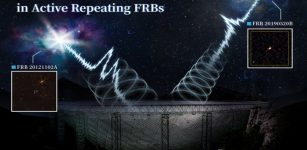 Circular Polarization In Two Active Repeating Fast Radio Bursts – Revealed By FAST Observations
No Comments | Dec 28, 2022
Circular Polarization In Two Active Repeating Fast Radio Bursts – Revealed By FAST Observations
No Comments | Dec 28, 2022 -
 Mars Orbiter Catches A Crater Full of Cracks
No Comments | Jan 3, 2016
Mars Orbiter Catches A Crater Full of Cracks
No Comments | Jan 3, 2016 -
 ALMA Observes: A Pair Of Galaxies In The Act Of Merging 12.8 Billion Years Ago
No Comments | Sep 2, 2024
ALMA Observes: A Pair Of Galaxies In The Act Of Merging 12.8 Billion Years Ago
No Comments | Sep 2, 2024 -
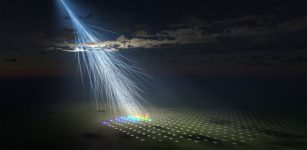 Second Highest-Energy Cosmic Ray Ever – Detected By Telescope Array
No Comments | Nov 25, 2023
Second Highest-Energy Cosmic Ray Ever – Detected By Telescope Array
No Comments | Nov 25, 2023 -
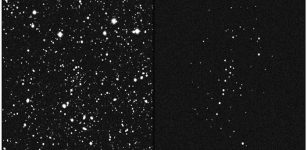 Faintest Star System Ever Detected Orbiting Milky Way – Found
No Comments | Mar 29, 2024
Faintest Star System Ever Detected Orbiting Milky Way – Found
No Comments | Mar 29, 2024 -
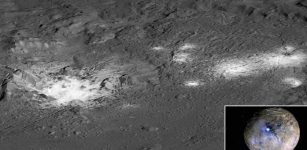 Different Bright Areas On Ceres Suggest Geologic Activity
No Comments | Dec 14, 2017
Different Bright Areas On Ceres Suggest Geologic Activity
No Comments | Dec 14, 2017 -
 Astrophysicists Imaged 74 Exocomet Belts Orbiting Nearby Stars
No Comments | Jan 20, 2025
Astrophysicists Imaged 74 Exocomet Belts Orbiting Nearby Stars
No Comments | Jan 20, 2025 -
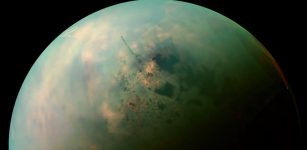 New Map Of Saturn’s Moon Titan Shows Features Similar To Those We Have On Earth
No Comments | Jan 8, 2018
New Map Of Saturn’s Moon Titan Shows Features Similar To Those We Have On Earth
No Comments | Jan 8, 2018 -
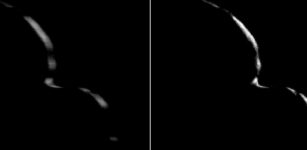 New Horizons’ Evocative Farewell Glance at Ultima Thule
No Comments | Feb 11, 2019
New Horizons’ Evocative Farewell Glance at Ultima Thule
No Comments | Feb 11, 2019 -
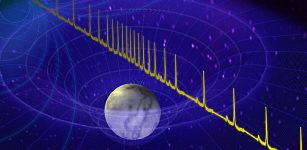 Most Massive Neutron Star 4,600 Light-Years From Earth – Discovered
No Comments | Sep 17, 2019
Most Massive Neutron Star 4,600 Light-Years From Earth – Discovered
No Comments | Sep 17, 2019

